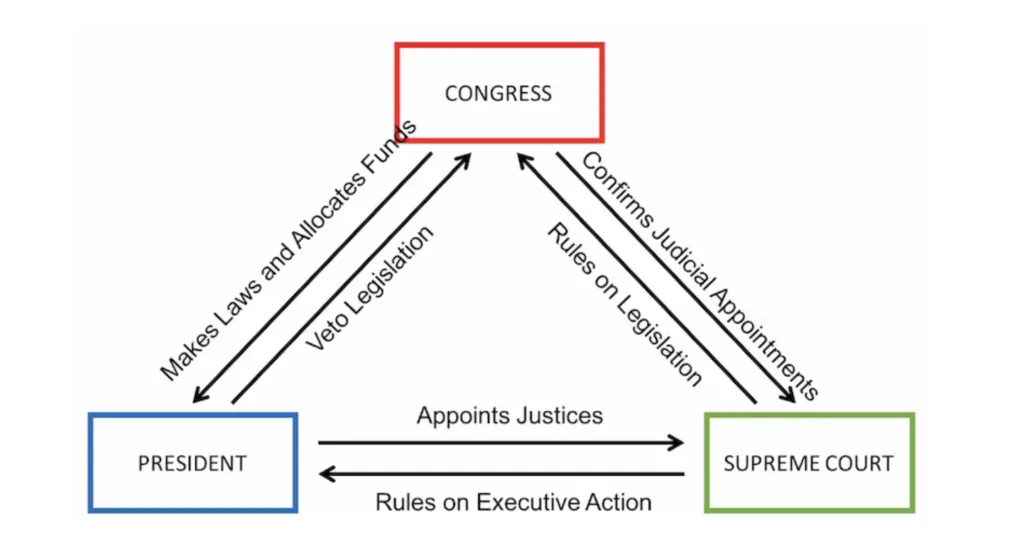Designing For Voice UI: Creating Effective Voice- Activated Apps
Explore the key principles and best practices for designing successful voice-activated apps. Check how to leverage NLP, context awareness, and AI for seamless user experiences.

Voice user interfaces (Voice UIs) are growingly common in the fast-changing technology scene of today. Voice technology is revolutionizing consumer interaction with digital systems from smart home gadgets integrated with IoT to virtual assistants like Amazon's Alexa and Google Assistant. According to stats, the Voice User Interfaces market size is forecast to increase by USD 50.73 billion, at a CAGR of 23.39% between 2023 and 2028.
Designing for voice user interfaces requires a different approach since they vary significantly from conventional graphical user interfaces (GUIs). Emphasizing user experience, technology integration, and future trends, this article will discuss the principles of designing successful voice-activated apps.
The Rise of Voice-Activated Apps
Convenience and accessibility of voice-activated apps have drawn a lot of interest. These apps are perfect for many usage situations including home automation, hands-free search, and accessibility for individuals with impairments since they let users accomplish activities hands-free.
This new kind of contact offers chances as well as difficulties for designers and developers. Natural language processing, seamless interaction flows, and GUIs depend on visual cues; voice UIs depend on auditory cues. Demand for expertly crafted voice-activated apps keeps growing as more businesses investigate AI ML development tools.
Key Considerations in Designing for Voice UI
Building a voice-activated app calls on knowledge of human speech patterns, language processing, and voice commands. These are some key components to take into account while designing for Voice UI:
#1. Simplicity and Clarity
Users of a voice-activated app anticipate fast and precise answers when they engage with it. Designers that want to satisfy these standards have to give simplicity top priority in response and command structure. Users shouldn't have to routinely repeat themselves or commit difficult voice commands to memory. An easy-to-use program lets users complete chores with less mental load.
A well-made voice-activated software for smart home device control, for example, should let users run basic requests like "Turn off the lights" or "Set the temperature to 72 degrees." Equally clear responses from the app should be "The lights are now off" or "Temperature set to 72 degrees."
#2. Natural Language Processing (NLP)
Voice UI design depends on NLP in great part. The program has to be able to decipher many speech patterns, accents, and languages. Good NLP guarantees that users, utilizing conversational language instead of regimented commands, may engage with the program intuitively.
For instance, a more sophisticated system should identify sentences like "Can you play my favorite song?" rather than demanding users to say "Play music." This creates more smooth and user-friendly interaction.
#3. Feedback Mechanism
Users of a classic GUI get visual cues including a loading bar or confirmation notifications. Feedback is similarly crucial in a Voice UI but needs to be supplied via audio or another sensory channel. Users of commands should be reassured the app recognizes and is handling their demand.
Should a user ask a voice-activated app to create a reminder, for example, the app may reply with " Setting a reminder for 3 PM" to verify the action. This kind of comment helps users of the software to be more satisfied and trusting.
#4. Context Awareness
A good voice-activated app ought to be context-aware. The app must thus be able to recognize the present setting of a conversation and offer pertinent answers. Should a user ask a voice assistant, "What's the weather today?" then follow up with "How about tomorrow?" the software should recognize that "tomorrow" denotes the weather prediction.
Additionally important for customizing the user experience is context awareness. A voice assistant installed in a car might, for instance, recall that a certain user enjoys a particular music playlist for their morning commute and then offer to play it automatically without being asked.
Best Practices for Designing Voice-Activated Apps
Although creating voice-activated apps calls for distinct factors from building conventional apps, following some best standards will help to produce more successful solutions.
#1. Designing for Multi-Modal Interfaces
Voice-activated apps mostly rely on voice as a means of interaction, however, users may still depend on visual interfaces for further context. Combining voice with visual components, multi-modal interfaces let users get visual as well as audio feedback.
A voice-activated smart thermostat might, for example, let users use voice commands to adjust temperature settings while showing the current temperature and energy use on a linked mobile app or device screen. This multifarious strategy improves the user experience generally.
#2. Ensure Accessibility
One of the main advantages of voice-activated applications is their possibility to make technology more reachable for people with disabilities. Voice commands can enable visually challenged or limited mobility individuals to more easily interact with apps and devices. Designers must make sure, meanwhile, that voice interfaces are really reachable.
Speech recognition software should, for instance, be able to identify several accents and speech patterns. Furthermore enhancing accessibility is offering users who might have speech difficulties other interaction strategies, such a mix of voice and touch controls.
#3. Incorporate Error Handling
Whether resulting from misheard orders, background noise, or ambiguous speech, voice recognition errors are unavoidable. Your program must include error handling systems. When a mistake happens, the program should gently ask for explanation or propose different commands.
For example, if a user says, "Turn on the oven," but the app doesn't understand, it could respond with, "I didn’t catch that. Did you mean ‘Turn on the oven’ or ‘Turn on the microwave’?" Offering helpful suggestions rather than simply stating "I didn’t understand" leads to a smoother user experience.
#4. Test with Real Users
Any user interface design requires testing. Voice-activated apps should be carefully tested with users from diverse backgrounds to ensure they can handle numerous speech patterns, accents, and environments. Wide-ranging user beta testing reveals areas where the app may struggle to interpret commands or respond.
Usability testing during development is essential. Real user comments will show how well voice commands work, how user-friendly the program is, and whether users encounter ambiguity or misinterpretation.
Voice Control Embedded with IoT
From households to businesses, the integration of voice control in IoT devices has presented fresh opportunities for building smart environments. Simple spoken instructions let users of voice-activated IoT devices handle everything from security cameras and industrial machines to lighting systems and appliances.
The growing trend of smart home systems is one obvious example. Voice assistants like Amazon Alexa or Google Assistant let homeowners now control several appliances. For instance, by integrating voice control embedded with IoT, users can create routines such as “Goodnight,” which automatically turns off all lights, locks doors, and sets the thermostat to a comfortable sleeping temperature.
Voice-activated IoT devices are being used in the industrial sector to real-time monitor and manage sophisticated equipment. Improving productivity and safety, workers can direct equipment without involving touch screens or manual controls.
Designers of successful voice-activated IoT solutions must provide flawless device connection, dependable connectivity, and strong security. By lowering latency and raising the speed of voice-command processing, the emergence of 5G networks will probably help these systems to be even more functional.
The Role of AI and Machine Learning
AI and ML are used to develop voice-activated apps. AI-powered voice recognition systems improve over time by analyzing speech patterns using machine learning.
These systems use AI to adapt to different dialects, languages, and conversational contexts, making voice contacts more natural. Developers can employ AI and machine learning to create voice-activated apps that learn from user behavior and preferences.
A voice-activated shopping app may use AI to suggest things based on past purchases and preferences. Artificial intelligence should lead to more advanced, context-aware voice-activated apps that are more convenient and customizable.
Future Trends in Voice UI Design
With many developments poised to influence the evolution of voice -activated apps in the next years, voice UI design looks bright.
#1. Conversational AI
Conversational artificial intelligence is the application of AI-powered technologies enabling machines to participate in more human and natural interactions. As this technology develops, voice-activated apps will be able to grasp and react to increasingly difficult requests and dialogues.
#2. Personalized Experiences
Voice-activated apps will provide ever more customized experiences as artificial intelligence and machine learning technologies grow more advanced. These technologies will be able to project user needs depending on context, past performance, and preferences.
#3. Voice Commerce
An emerging trend predicted to become more and more common is voice commerce—that is, shopping by voice commands. Users will be able to search, buy, and manage goods totally using spoken interactions as voice-activated apps get more advanced.
#4. Enhanced Security
Biometric voice recognition and privacy protection technologies will remain innovative driven by security issues around voice-activated apps, particularly those integrated in IoT devices. Ensuring data security and privacy will become especially important as more consumers choose voice-activated devices.
#5. Voice UIs for Augmented Reality (AR) and Virtual Reality (VR)
Future AR and VR technologies are predicted to depend much on voice UI. Voice commands will offer users a more natural approach to engage with virtual surroundings as these immersive technologies develop, therefore releasing them from the restrictions of physical controllers.
Conclusion
Creating successful voice -activated applications calls for thorough knowledge of user behavior, language processing, and the technologies driving voice recognition. Simplicity, context awareness, and strong error handling will help developers produce user-friendly voice UIs.
As AI ML development services continue to advance, voice-activated apps will become more personalized and sophisticated. Concurrently, the integration of voice control integrated with IoT will revolutionize sectors by allowing flawless, hands-free interactions between several devices and surroundings.
Voice technology has a bright future and fascinating advances just ahead. In a world going more and more voice -driven, incorporating voice UI design is now a need for companies and developers rather than a choice.
What's Your Reaction?















